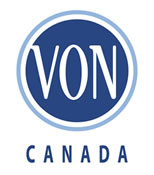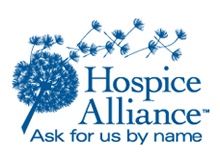As one of the most documented and regulated industries, home care routinely produces vast amounts of paperwork, costing agencies precious time and resources to generate and maintain. As technology has evolved, today’s digital solutions provide advantages that paper just can’t match, from enhanced productivity to better compliance, communication, cost, and care.
 Quite simply, in a client-driven, value-based health care environment, paper-based processes hold agencies back. Instead, agencies should look for opportunities to streamline and automate their operations with smart digital approaches.
Quite simply, in a client-driven, value-based health care environment, paper-based processes hold agencies back. Instead, agencies should look for opportunities to streamline and automate their operations with smart digital approaches.
Here are four real-world instances of home care agencies that went paperless with specific processes – and reaped the rewards as a result.
1. Mileage documentation
 Something as seemingly simple as tracking mileage used to drive both aides and office staff at Graceworks at Home crazy. Aides had to remember to manually record the miles they logged traveling to and from every client visit; they then had to physically drop off the forms at the office. Once submitted, office staff manually entered the paperwork into their back-office system for reimbursement.
Something as seemingly simple as tracking mileage used to drive both aides and office staff at Graceworks at Home crazy. Aides had to remember to manually record the miles they logged traveling to and from every client visit; they then had to physically drop off the forms at the office. Once submitted, office staff manually entered the paperwork into their back-office system for reimbursement.
This wasted valuable time for everyone – from the caregivers who traveled out of their way to submit the forms to office staff who tried to decipher the handwritten notes and typed in the information. The process was inefficient and error-prone, and no one was happy with it.
All of that changed when Graceworks adopted a digital mobile solution for mileage tracking. Their new automated approach has freed aides from driving paperwork into the office and office staff from manual data entry work that used to take the equivalent of a full-time employee to complete. Best of all, because the GPS-based mobile technology improved the accuracy of mileage reporting, the agency has seen a 35% savings in mileage reimbursement costs.
2. Staff communications
 VON Canada, a nonprofit home and community care organization, manages an enormous workforce of 6,400 staff and 6,200 volunteers who collectively deliver a range of nursing, personal support, and community services. Communicating quickly and securely with a workforce of this size naturally presented numerous challenges.
VON Canada, a nonprofit home and community care organization, manages an enormous workforce of 6,400 staff and 6,200 volunteers who collectively deliver a range of nursing, personal support, and community services. Communicating quickly and securely with a workforce of this size naturally presented numerous challenges.
Moreover, the stakes were high. If caregivers were unable to get timely answers to patient care questions, care quality could be impacted and service levels could be missed. The organization needed a technology solution that would facilitate communication across multiple complex care scenarios.
Rather than jumping into the first available option, VON Canada instead stepped back and analyzed their operational processes to identify opportunities to better connect management, staff, volunteers, and patients. This highlighted a startling fact: It took the organization 169 distinct steps to intake a new client referral and send field staff to the client’s home.
Armed with this insight, VON Canada implemented a solution that automated key workflows, integrated with their back-office systems, and enabled secure, real-time communication. The difference has been dramatic. Field staff and office staff are now able to connect with each other better, faster, more securely, and more often. Automating workflows has increased productivity by 25%, giving each staff member the time to see one additional client per day.
3. Patient assessments
In home health care, client visits are typically tightly scheduled. Very often, there’s simply no time during a visit for the caregiver to complete the care documentation. Caregivers may try to finish up their paperwork at the end of the day – a less-than-ideal scenario.
 Hospice at Home was facing precisely this challenge. “We realized we needed to find a mobile solution because our aides were charting at night,” explains Melinda Gruber, CEO. “They let us know they weren’t happy with the arrangement because the extra hours cut into their family time and it was difficult to remember the details about the care they gave during the day.”
Hospice at Home was facing precisely this challenge. “We realized we needed to find a mobile solution because our aides were charting at night,” explains Melinda Gruber, CEO. “They let us know they weren’t happy with the arrangement because the extra hours cut into their family time and it was difficult to remember the details about the care they gave during the day.”
The company implemented a digital solution that enables caregivers to complete comprehensive patient assessments right at the point of care, using a specialized mobile application on a smart phone. All documentation feeds into a computer portal accessed by office staff, which improves agency oversight of the care delivered.
The solution has been enthusiastically embraced by everyone within the agency, with astonishing results. Not only has documentation accuracy and completion improved, documentation time has been slashed to about 40 minutes per day – a 76% time savings for each caregiver. Over-serving has been reduced by nearly 44%, and compliance more than doubled in six months.
4. Visit verification
Among the many changes outlined in the 21st Century Cures Act, few items are as game-changing for the home care industry as Electronic Visit Verification. Agencies must think carefully about the best solution to document that a visit took place, that caregivers provided the expected services, and that the agency has fully complied with legislative or payer requirements.
 Hospice Alliance proactively realized their agency needed to improve compliance – but they also understood that, in today’s cost-sensitive health care environment, any solution would need to also improve operational efficiencies across the organization.
Hospice Alliance proactively realized their agency needed to improve compliance – but they also understood that, in today’s cost-sensitive health care environment, any solution would need to also improve operational efficiencies across the organization.
The agency chose a comprehensive digital solution that included GPS-based Electronic Visit Verification that has delivered a surprising level of transparency and visibility into caregiver activity. Every visit is now verified electronically, and Hospice Alliance can quickly demonstrate that care and services for every visit have been delivered according to the care plan.
This paid off about five months after implementing their solution, when CMS arrived at their door for an audit. Because the agency had decided to go paperless with visit documentation, office staff had every file the auditor requested literally at their fingertips – and they easily passed the audit with flying colors.
Ultimately, though, the real benefit of replacing paper with digital solutions is that it enables home care agencies to focus on what’s important: providing exceptional care and improving patient outcomes.
With so many aspects of daily life going digital, it’s time for home care agencies to also make the transition. Paper-based processes are inefficient and error-prone, wasting time, money, and resources. Agencies that strategically implement technology attain significant improvements to employee productivity, cost reductions, agency efficiency, and the delivery of care.
Want to take things even further? Learn five more ways to increase productivity and improve financial outcomes.
